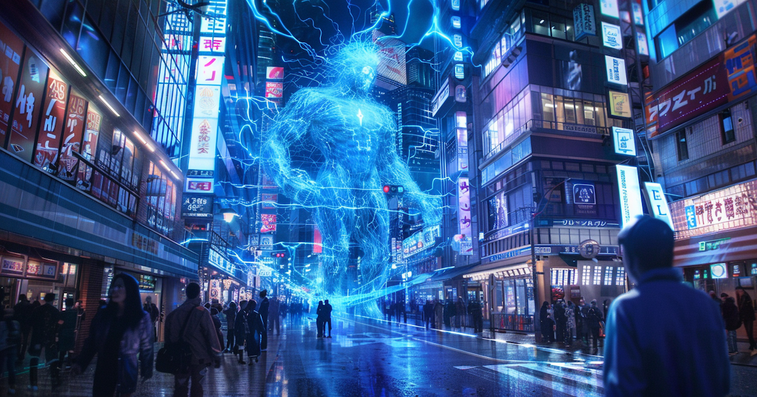
Time travel is one way to look at it…
The incessant race to achieve artificial general intelligence (AGI) — the point at which an AI can perform a wide range of tasks as good or better than humans — appears to have no limits.
It’s an absolute frenzy right now. The stakes are simply too high, as we explored in Outer Limits — The AI Shell Game.
So it came as no surprise to hear that Microsoft and OpenAI are planning to build a $100 billion AI supercomputer as quickly as they can.
It’s easy for us to become numb to the numbers, with all the billions and trillions being thrown around. So it’s always good to have a reference to understand the scale of the investment.
For example, this January, Amazon Web Services (AWS) confirmed that it will spend $10 billion to build out a massive data center facility in Madison County, Mississippi.
The deal was so valuable to the state that it came with tax incentives that extend 30 years into the future. A commitment by the local power company to spend an additional $2-3 billion on energy infrastructure to guarantee supply of electricity was also part of the deal.
As far as a data center investment, the AWS Mississippi facility is massive. At least ten-times the scale of most. Most data center projects are a small fraction of the size/scale.
The $100 billion-dollar facility that Microsoft and OpenAI are building is 10x larger.
And the reason is simple. Multi-modal large language models (LLMs) get “smarter” with more computational horsepower. So in order to accelerate the development of an AGI, massive computational power is required as soon as possible.
The project’s name is Stargate. What a telling description.
The name comes from a classic 90s science fiction movie of the same name. It’s based on the theory of an Einstein-Rosen bridge, otherwise known as a wormhole, that allows “passengers” to travel through a Stargate to other locations in the universe that would otherwise be inaccessible.

Wormholes can potentially be used to travel from one universe to another as well, assuming that the theories of a multiverse or parallel universes are to be true.
But whether they are proven or not, when the world makes the leap from today’s LLMs to artificial general intelligence (AGI), it is going to feel like we stepped through a Stargate, or as if we jumped through time to the future.
A future that we’re not prepared for, but is coming whether we want it or not…
Microsoft and OpenAI have thrown the gauntlet down with their plans for a $100 billion AI datacenter to designed to train an AGI.
To further put the $100 billion (plus) plan into context, prior to the news of Stargate, Microsoft had messaged that it would be spending more than $10 billion in 2024 and 2025 on a new data center build out. Again, the plans for Stargate are about 10X what was previously planned.
“Catch us if you can” is the message, as is “we intend to win!”
The sheer scale of a facility like this is hard to comprehend. There will be millions of semiconductors employed, most likely GPUs (graphics processor units), connected together with thousands of miles of cables.
What an enormous undertaking.
And just like Amazon’s massive deal in Mississippi, the most critical element — after the semiconductors — is energy.
A facility like this will require power measured in gigawatts.
One gigawatt is enough to power about 750,000 homes...
Five gigawatts are enough for 3.75 million homes.
That’s more than enough to power all of the housing units of Los Angeles, Chicago, and Dallas combined…
That’s roughly what will be required just to power one massive AI data center — Stargate.
Not much is being said about the electricity requirements needed to fuel these massive data centers, though. And yet they have a material impact on global electricity demand.
By 2022, data centers were already consuming about 460 terawatt-hours of electricity. That was about 2% of global electricity usage.

By 2026, electricity demand by data centers will almost certainly exceed the “high case” projections shown above, more than 1,000 terawatt-hours. That’s about the same as the total electricity requirements for Japan, the world’s 4th largest economy after the U.S., China, and Germany.
Worth mentioning is that the above estimates predated the developments in AI during the last 9-12 months.
And also by 2026, the AI industry will be consuming more than 10X the amount of electricity that it consumed in 2023.
10X is a recurring theme. 10X the capital expenditures. 10X the capacity. 10X the electricity requirements. All within the span of just a few years.
It’s the perfect representation of exponential growth. We hit the inflection point in AI last year, and now it’s up and to the right.
A real Stargate would come in handy right now, though.
“Experts” severely underestimated how quickly developments in AI would happen. We’re no longer decades away, but years away from AGI… and with each month, it just gets closer.
Elon Musk recently suggested that we may see AGI as early as next year, and a superintelligence by 2029.
This underestimation is creating bottlenecks everywhere — it’s a big problem for electricity production, especially clean energy production.
If only we were able to travel through a Stargate to another universe, “acquire” clean energy technology from another civilization (almost certainly nuclear fusion), and bring it back for immediate use, we’d be in very good shape.
In the absence of a traversable wormhole though, these newfound electricity demands will act as a massive catalyst for the energy technology industry to accelerate their development for clean energy.

Questions, comments, or feedback? We always welcome them. We read every email and address the most common threads in the Friday AMA. Please write to us here.